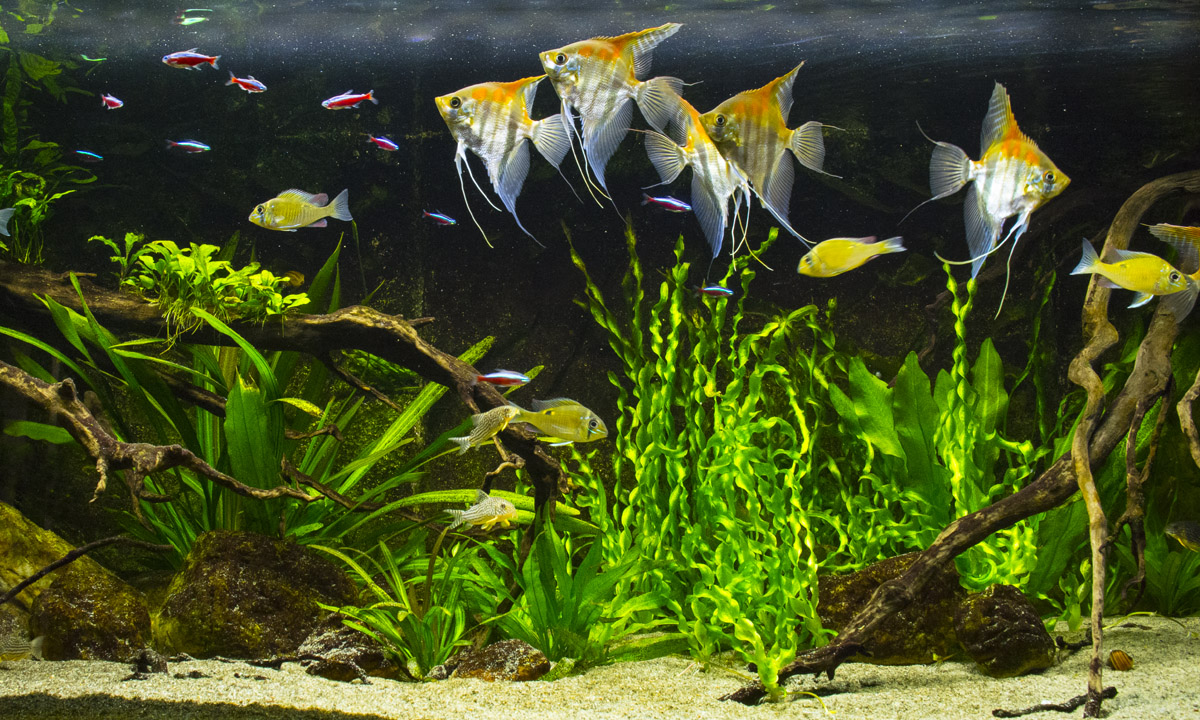Names of fish – where do Latin names come from and why should we use them?
When we talk to friends or family about our aquarium and its inhabitants, we usually use common names because we all know them. After all, almost everyone has heard of guppies, tetras or angelfish. However, if a Malawi cichlid breeder wants to talk about all his specimens, he will most likely use their scientific names. Perhaps with additional information about their location or color variant. But why are these names so complicated and difficult to remember? Couldn’t the names of the fish be a little simpler?
Where did Latin names originate?
To find out, we will have to go back in time a bit. To the 18th century, to be exact. Because then naturalists around the world began to study and catalog the world around us. Many scientists have taken to describing plant and animal species, but it was Carl Linnaeus who introduced the binominal naming system in his famous book “Systema Naturae”. Since Latin had been the language of scholars and researchers since the Middle Ages, Charles Linnaeus chose to use Latin names as well.

Today in science we use “latinized” names, that is, we transfer modern words into Latin. Sometimes we also use Greek. Even the names of real people are allowed. That’s why we have, for example, a snake named Atheris hetfieldi (in honor of Metallica frontman James Hetfield) or a spider named Heteropoda davidbowie.
Why does the species name consist of two elements?
It’s a simple way to define a species and make sure no one else uses that name to describe another organism. While species names (the latter part) can be the same for two organisms, combining them with a generic name makes them unique. It is extremely rare to find the same generic names describing two completely different organisms. However, there is a plant with a generic name Dracaena and there is also a lizard with the same name. Theoretically, this creates the possibility of a situation in which two unrelated organisms are named exactly the same. For example, if some new Dracaena plants are named the same as some new of Dracaena lizards. Usually, however, scientists are smart enough to avoid such situations.
Moreover, the double name additionally tells us something about the relationship between the species. For example, Lake Malawi is home to several species of cichlids in the genus Aulonocara, and they share a common generic name. However, they can be distinguished by the second element, e.g. Aulonocara hansbaenschi or Aulonocara nyassae. We can trace the taxonomy starting from genus (species sharing common traits – Aulonocara), through family (genera sharing common traits – Cichlidae), order (animals sharing common traits, e.g. all cichlid fishes), class (Actinopterygii – all ray-finned fish; as opposed to muscle-finned fish or sharks), phylum (vertebrates), to kingdom (animals).
What is the third element in a fish’s species name useful for?
Classification from the family upward is usually of little use from an aquarist’s point of view. It only starts to get interesting from the genre down. Animals of the same species may differ in appearance. Let’s just take guppies. Some populations (groups of animals that live in the same area) may have a distinctive coloration or pattern, depending on the location.
For scientists, it doesn’t matter much, but for breeders and die-hard aquarists, it does. They want to know the exact place of origin of their fish, or they want to breed a particular color variety. Therefore, in aquarium hobby, two-part name is sometimes supplemented with the term describing location. Labidochromis caeruleus “Thumbi Reef” was caught near the Thumbi Islands, which lie in the southern part of the Lake Malawi.


What else might be surprising in names of fish?
Breeders also like to name the lines of fish they breed. Just like in the case of Aulonocara sp. “fire fish”, which is the result of interspecies hybridization.


An interesting example is plecos, many of which have not yet been scientifically classified. Commerce is ahead of science, so it has to create its own classification. That’s why many plecos have only the letter L with a number in their names. L stands for Loricariidae, the Latin name for plecos, to which all South American catfish that have a mouth equipped with a suction cup belong. The number, on the other hand, is the next number given to the discovered fish. There are now more than 500 species described this way. But beware, scientists often find that several fish with different numbers belong to the same species of plecos. They are simply polymorphic species.
Common names of fish
The above examples probably show well that sharing a common language to describe fish can sometimes be useful. But what about common names? Well, it is clear that a German-speaking person will not understand the Polish colloquial name of the fish. And even if all aquarists spoke English, there would probably be problems. Common names are simply not as unique as scientific names. Just to give you an example, there are two fish named “angelfish”: a marine fish from the family Pomacanthidae and a freshwater fish from the genus Pterophyllum.

Letting a freshwater fish into a marine tank just because the seller assured that the angelfish was ideal for reef tanks would definitely have catastrophic consequences.










